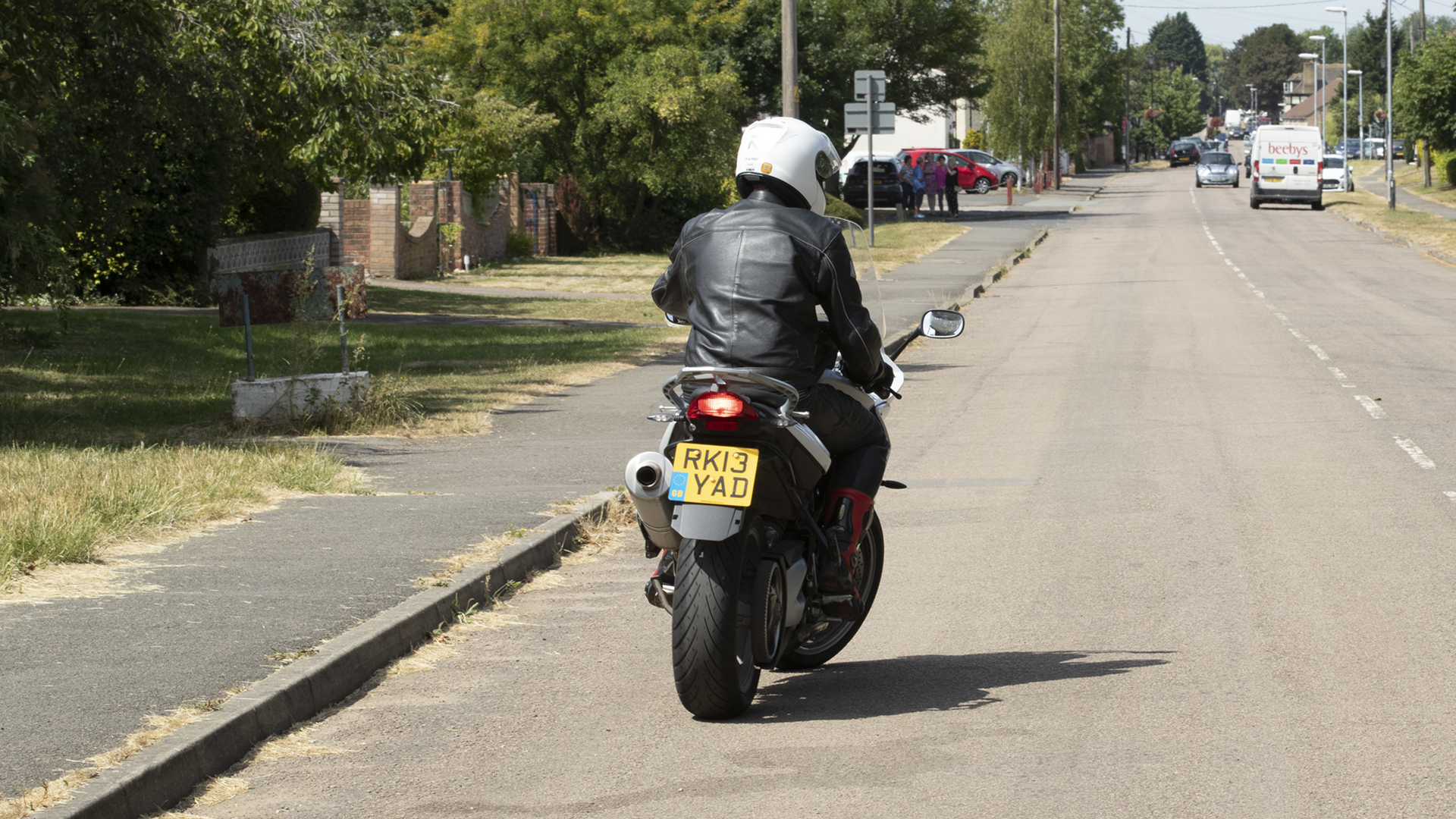
U-turns
Master fabulous feet-up U-turns
Slow control is wonderful to behold, and even better to do – here’s how to achieve ultimate control
The U-turn demonstrates expert machine control – but many perfectly capable riders have a complete mental block on making U-turns. Riders often struggle to keep the bike smooth in the turn and this is what forces them to dab a foot down, get flustered, and start paddling. The more you fixate on failure, the more tense you will be and the worse your problem with U-turns will become. Give yourself the easiest ride possible by finding the widest section of road then ensuring you use every available inch of it. Come to a complete stop and take a thorough look around you for oncoming traffic. Make a lifesaver check before pulling away. It’s all too easy to get flustered and forget to look properly. Then, with a constant throttle initiate the turn keeping the clutch just on the edge of the biting point, and your vision lifted. Push the bike down into the turn by keeping your bodyweight to the outside.
For a smooth move, keep the revs set and use the clutch to modulate the speed, while also applying light and continuous pressure to the back brake. This has the added effect of making the bike feel more planted. Modulation of the brake will make for a stable turn.
As you complete the turn, re-assess the situation and be aware that traffic could be approaching from behind you. The more you perform U-turns the better you’ll get at them. Make a point of practising regularly to keep your skills sharp.
QUICK TIPS
Forcing it round the U-bend
Many riders really come unstuck when they try to make a tight controlled turn. Most forget to cover the back brake and use it to help make the turn and control their speed, and often the rider’s body position is wrong, making it hard to centre themselves well enough to maintain feet-up control.
It’s all a matter of balance
In order to make a clean U-turn, you must be able to balance your throttle inputs with clutch slip, and use of the back brake. This will enable you to control the rate of the turn and your ability to stop if required.
Planning and positioning are key
Use the whole road for your turn. This relaxes the rate of turn and gives you more room to adjust and react. Once you initiate the turn, move your body to the outside of the turn (ie left of centre on a right turn, pushing the bike down) to allow the bike to turn tighter while maintaining balance.
Committing to the turn is crucial
Stopping before the U-turn gives you a few moments to assess the road, the space and other traffic. Once clear, commit to the turn, but if things start to go wrong, abort at the first opportunity. You don’t want to be stuck in the middle of the road. Once broadside, it’s obviously important to keep moving towards safety.


